1941. Where did the 16th Army go?
The following abbreviations are used in the article: А - army IN - military district, GSh - General base, railway - railway Spacecraft - Red Army, MPR - Mongolian People's Republic, md (mp) - motorized division (regiment), RGC - reserve of the high command, Goals Difference - intelligence materials, RU - Reconnaissance GSh KA, sd - rifle division, Ur - fortified area td - tank division, FAC - Member of the Military Council.
The designations used are military districts: ArVO - Arkhangelsk Military District, ZabVO - Transbaikal Military District, ZakVO - Transcaucasian VO, ZapVO - Western Special VO, Cova - Kiev Special VO, ORVO - Oryol Military District, Urvo - Ural Military District.
In the previous part in the memoirs of veterans it was said about the redeployment of troops from Transbaikalia to ZakVO. The movement of troops from the Ural Military District was also planned to the south. On June 10, when discussing plans to move the 16th A, Stalin made a decision to change her route from Transcaucasia to the road to OrVO. On June 12, army unloading stations changed again: it was decided to send troops to the KOVO.
This version is presented in the book “Commander Lukin” by V.V. Muratova and Yu.M. Gorodetskaya (Lukina) and in the comments of historians. This version is partially confirmed by the recollections of the PMC of the army of Lobachev and Marshal A.I. Eremenko. The deputy commander of the Western Front Eremenko during the battle for Smolensk spoke with M.F. Lukin and A.A. Lobachev. From them he could learn the details associated with the plans for using the army.
If from May 25 the troops from ZabVO were actually planned to be used in ZakVO, then the official position on the redeployment of troops of the 16th A and 57th TD to the West is deliberately distorted. This distortion of events could be required to create the appearance of the visionary leaders of the spacecraft and the staff of the General Staff. In particular, the operational management. Guilty of all events, according to the official version, is Comrade. Stalin. The head of the country, of course, is responsible for everything. Are military experts who advised him guilty? ..
If it can be shown that 16th A was heading to ZakVO, then the statement about planning the movement of troops of the Ural Military District to the south can also be true. In this case, the transportation of the troops of the two armies of the RGC to the south instead of the west can clearly indicate that at this time and in the near future, the start of a war with Germany is not expected in the General Staff.
Based on indirect evidence, we will try to confirm the above version, which is fundamentally different from the official point of view. Further, the author’s assumptions will be accompanied by the word “probably” or the sign “?”.
Historians on the 16th Army Route
Historians know a lot about pre-war events, including and on the deployment of troops from internal HE. However, the description of not all events has already been included in their books. I will give a fragment from a discussion of historians about troop transportation.
M.F. Timin: “Excuse me, where did the troops go on April 26? .. For example, if you take the ArVO and the Trans-Baikal Front, then the two armies advanced completely not to the border, not to Ukraine ... This is well known now. And therefore, to represent this extension of the deep armies as a movement to the west ..."[Wrong. - Note auth.].
A.V. Isaev: «in April [Army from the Ural Military District no one. - Note auth.] did not send ... Where did the 16th A go? ”[/ i]
M.F. Timin: “To Voronezh ... Then the 28th A went ... to Yaroslavl. Because no one was traveling precisely to the western border for some kind of "deployment" of a group there ... "
A.V. Isaev: “16th A went to Transcaucasia ...”
M.F. Timin: "Naturally, that is not just ..."
A.V. Isaev: «[16th A - Approx. auth.] turned on June 10 ... "
O.Yu. Kozinkin: “Inland counties began to advance until June 11th. They started [put forward - approx. auth.] in the end of May..."
A.V. Isaev: “In the amount of one army ... 20th And didn’t go anywhere ... One 19th A. 20th, 21st, 22nd went much later. Therefore, they drove only to the border of the Dnieper ... Roads did not work in emergency mode. They worked (absolutely) in peace mode. Technically, the spacecraft could advance further ... "
When discussing events in May - early June 1941 at the forum "Military Literature", the famous historian S.L. Chekunov wrote to the writer O.Yu. Kozinkinu: "If you knew, where 16th A was taken, I would not [speak. - Note auth.] about "war with Germany"... The place of its new deployment does not correlate with the war with Germany ..."
The beginning of the relocation
The decision to redeploy troops from Transbaikalia could not be made without agreement with Comrade. Stalin and the People's Commissar of Railways. A directive to the headquarters of ZabVO on the beginning of the movement of troops was sent from the General Staff on the night of May 25 to 26. Therefore, on the morning of the 26th, the chief of staff calls the commander of the district troops, who since May 25th has been located at the 16th A.
Based on the journal of the visit to Stalin’s office, it can be said that the question of the redeployment of troops from ZabVO could be considered on May 23. To discuss issues related to rail transportation, by 20-00 the People's Commissar of Railways L.M. Kaganovich. Probably something needed to be clarified. On May 24, among other issues, spacecraft leaders reported on troop movements from Transbaikalia. Since the encryption was sent only on the night of May 26, it can be assumed that the army was not particularly in a hurry with the movement ...
On May 26, General Lukin and the division commissar Lobachev learn about the beginning of the army’s transfer to the West. “The order was so unexpected that everyone present looked at each other in perplexity ...”
It was indicated at the district headquarters or in the General Staff directive that in order to conceal the fact of the redeployment of troops, the echelons should be sent at night. Tanks and sentries on platforms need to be masked. It is forbidden for personnel to open the doors and hatches of cars during transportation. Colonel M.A., Chief of Staff of the Army, was appointed responsible for sending the trains. Shalin and FAC Lobachev. It was decided to send primarily the 17th TD for accommodation, which required 40 echelons.
This decision could be due to the best combat training of the 17th AP or the presence of more vehicles: 1429 against 1034 in the 13th AP. From Chita, Shalin and Lobachev went to Detachment 77, near which the 17th building was stationed. M.F. Lukin remains in Chita, where, together with the commanders of the district headquarters, he prepares documents for the General Staff on the composition of the army. In the morning he leaves with secret documents and guards by courier to Moscow.
FAC Lobachev will leave Chita at 7 a.m. on June 4 and arrive in Moscow in the late evening of June 10. It turns out that the travel time of the courier train was just over 6,5 days. If M.F. Lukin left on the morning of May 27, then arrived in Moscow in the late evening of June 2. From 3.6.41, the commander of the 16th A could get acquainted with the documents in the General Staff and learn about the place where the army was concentrated, about its tasks in the near future, etc.
A bit of information about military trains
A military train is a specially allocated and prepared train for moving troops, equipment and other military cargo. Before the war, the railways of the Soviet Union worked in a peaceful manner.
I.V. Kovalev (Deputy People's Commissar of State Control for Railway Transport):
L.M. Kaganovich wrote in his memoirs:
The military schedule differed from the peaceful one in that it was parallel - all trains, including passenger, which were reduced, had the same speed and the same technical parking ...
June 23 ... an order was signed ... on the introduction of a military schedule on all 44 roads of the railway network of the Soviet Union ... The new military schedule established a unified weight of a military train - 900 tons ...
The planned speed of military trains was 500 km per day. The trains following to replenish troops during the battle of Moscow and in Stalingrad were provided with a speed of advance of 800-1000 km / day. It is mentioned that in the military echelon there were up to 50 cars.
Could not find information on comparing the speeds of trains on double-track and single-track railways during the war. In Soviet times, troops were transported by train at speeds of up to 800 km or more on double-track railway lines, and up to 600 km per day on single-track lines. Those. the speed of transportation of troops in the single-track direction was 25% lower than in the double-track.
Military trains could be formed from two-axle or four-axle covered wagons and platforms with a carrying capacity of 20 or 50 tons. If the platforms were 20-ton, then they loaded on one tank or tractor, one 152-mm howitzer gun, three cars on two platforms .
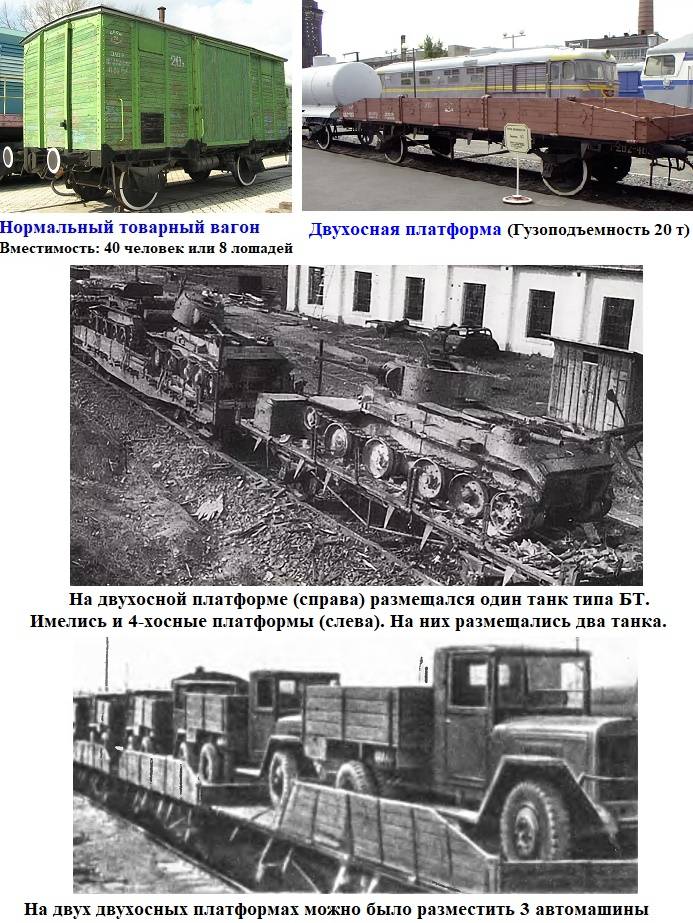
On the diagram you can see that the route for the transportation of troops of the 16th A and 57th TD from the passage 77 (300 km east of the Chita station) to Novosibirsk passes through a double-track railway. After turning south, the echelons continued along the single-track road, the speed should have been reduced. If the trains went to the West, then Stalin, sending troops to Central Asia, increased the shoulder of the transport of troops by 2200 km. But comrade Stalin was a good manager ...
Estimated timing of movement of the first echelons
Let's try to check the first point of the version - this is a change in the route of the echelons of the 16th A and 57th TD from south to west on 10.6.41.
According to the official version, the sending of trains began on May 26. The loading of parts of the 17th TD should begin immediately after the call of the leaders of the 16th A from the district headquarters. In accordance with the instructions, trains were required to be sent at night. On May 26, in Chita, night falls at 22-13. When making the calculations, we accept that the 1st echelon of the 17th TD left after dark at 23-00 on May 26.
This train arrived in Shepetivka by the morning of June 21. By definition, morning is the time between 6 and 12 hours. Suppose the train arrives at 8-00. Considering the 5 hour difference, the travel time was about 25,6 days. The distance from Route 77 to Shepetivka on the Central Asian route is 9904 km and the average train speed is 387 km / day.
Commander of the 57th TD indicates the departure time of the 1st echelon "in the end of May". An urgent directive from the General Staff should have been brought to him as quickly as possible. Therefore, it is logical to assume that the 1st echelon of the division also had to leave on the night of May 26-27.
We accept that the 1st echelon of the 114th TP 57th TD departed from the Bayanturme station (MPR) after dark - at 23-00 on May 26. Bayanturme station from to exit 77 is located at a distance of 370 km. The train arrived in Proskurov on June 21 after dark. Given the difference in time zones, the travel time was 26,2 days. The distance from Bayanturme to Proskurov is 10406 km and the speed of the train was 397 km / day.
The speeds of both echelons are quite close to each other (387 and 397 km / day), but less than the planned speed (500 km / day). Why? Initially, the author would answer that it was connected with single-track railway traffic, and that would be the wrong answer ...
Estimated time of movement of trains sent in a few days
We calculate the speed of the headquarters train that arrived in Chita after midnight on June 4. PMC Lobachev reported to the commander of ZabVO about sending trains and found out that he should leave for the General Staff on the courier train in the morning. A.A. Lobachev arrived at the station, where a train was waiting for him, said goodbye to the staff of the 16th A headquarters and the train left. Suppose the train departed at 3-00 on June 4. From the book “Commander Lukin” we learn about the next time mark during the movement of this echelon:
“Novokhopersk,” suggested Sorokin ...
The distance from Chita to Novokhopersk along the Central Asian route is 8313 km. Travel time taking into account the time difference before V.M. Molotov (12-15) - 18,6 days. The speed of the train was 449 km / day. It turns out that the decrease in the speed of the first echelons is not related to their movement on a single track.
Let us verify this statement for another train, which was moving in the middle of a string of military trains. This is the echelon of the 404th artillery regiment of the 109th MD (5th mechanized corps), which arrived at Chita station 5.6.41.
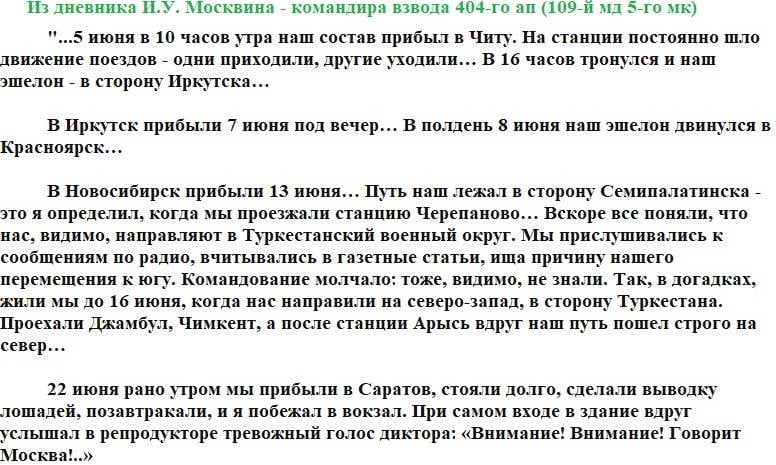
In accordance with the entries in the diary of I.U. Moskvina, the train departed from Chita station at 16:5 on June 22 and arrived in Saratov early in the morning on June 6. The author considered that early in the morning is 16,8 hours. Travel time, taking into account the time difference - 7867 days. The distance between the stations of Chita and Saratov is XNUMX km and the speed of the train is equal to 468 km / day. This speed is comparable to the speed of the staff level (449 km / day).
According to I.U. Moskvin can even determine the speed of transportation of trains on the double-track Trans-Siberian Railway. The diary indicates that the train departed from Chita at 16:5 on June 7, and arrived in Irkutsk on June 17 in the evening. We accept that in the evening - at 2,04 o’clock. With a travel time of 1010 days and a distance of XNUMX km, the echelon speed was 495,1 km / day, i.e. It turned out to be quite close to the planned speed (500 km / day). It turns out that while the trains were moving along the Trans-Siberian Railway to Novosibirsk and further along the single-track Central Asian railway, the train speeds were 449 and 468 km / day! These are also quite high speeds of military trains.
Maybe the secret of lower speeds of the first echelons is due to the delay in time when changing their route? And when was the first echelon of the 1th TD supposed to arrive at Arys station?
Depending on the speed of 449-468 km / day, he was supposed to arrive at Arys station (distance from the 77th detour to Arys station 5554 km) from 23-00 on June 7 to 11-00 on the 8th. If the speed of the trains was somewhat lower, then the estimated time of arrival is shifted and the train could arrive later.
As the echelons of the 17th and 57th TD approached Arys station, they slowed down or stopped at the stop stations, waiting for a decision on their future route from the people's commissar of defense, the chief of the General Staff and the head of the Soviet Union, Comrade Stalin.
This assumption is confirmed by the recollections of veterans. In accordance with them, the first echelons followed non-stop at large stations and stopped only at the semi-stations for food and for servicing or changing locomotives. Food was brought into the cars in buckets. According to the regulations - the stop for food was 1 hour. Again, back to the diary of the platoon commander I.U. Moskvina:
A stop in a large city lasted about 19 hours! Soldiers of other echelons even walked around the station, walked horses ... From that moment, no one was in a hurry for some time ... Neither in the Caucasus, nor in the war with Hitler ...
I.U. Moskvin:
The train arrived in Novosibirsk on June 13. It is not noted in the diary: this morning, or day or evening. Suppose it is 10-00. Then the travel time is 4,96 days. At a distance of 1850 km, the echelon speed was 373 km / day. If the train arrives later, the speed will decrease even more.
Thus, the speed of movement decreased, there were long parking at large stations. They even organized an unscheduled washing of personnel, which previously was washed only at Arys station ... The delay could be due to a traffic jam from military trains that had accumulated from Krasnoyarsk to Arys station in anticipation of their fate ...
If the trains did not immediately move to the West, but to the West, then it would not be necessary to reduce the speed of the trains and spend time on their long downtimes. All this confirms the version that before June 10 some shock information again arrives in Moscow as a result of the discussion, which is a change in the routes of the 16th and 22nd armies from the south to the west. But not to western VO! This was also said by historians familiar with archival documents. The echelon of the 333rd artillery regiment of the 152nd SD, which was sent later already followed without major stops.
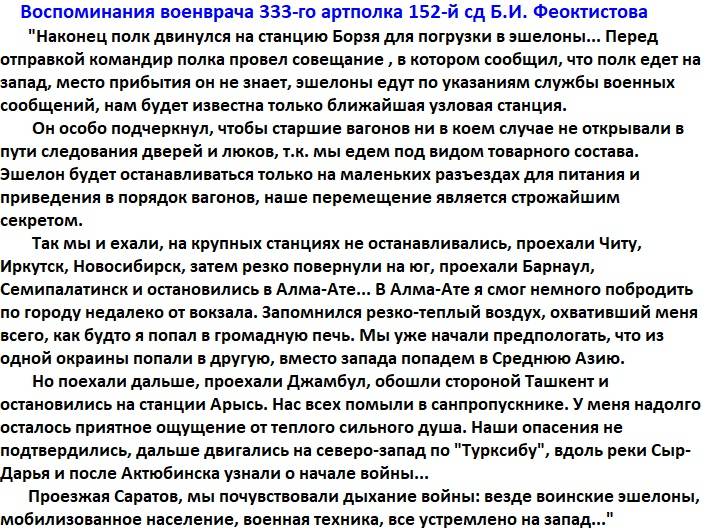
Probable events in Stalin’s office
When was it decided to change the route of the echelons of the 16th A and 57th TD?
On June 7, the military and the people's commissar of the oil industry, Sedin, remained in Stalin’s office. Beria and Malenkov came and went. Given the measures of increased secrecy associated with the development of plans by the commanders Lukin and Ershakov, we can say that most likely these plans were reported to Stalin on June 9 from 16-00 to 17-00. Given the new RMs that arrived, Stalin finally closed the question of the Iranian military plans ...
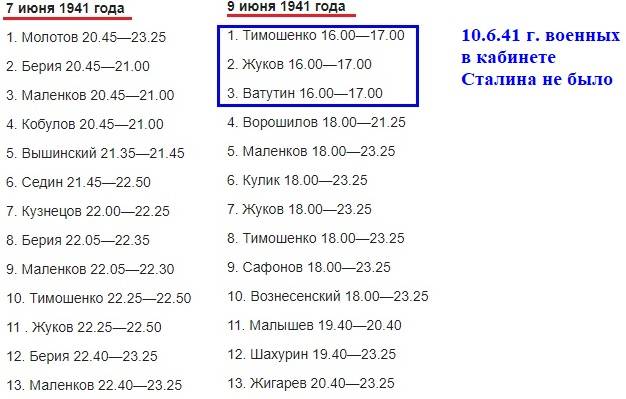
After turning the echelons of the 16th A and 57th TD, the railway communication of the Central Asian republics with the whole country was very difficult. Presumably, the decision to change the route of transportation of troops is associated with certain RMs that cast doubt on the reliability of long-standing materials of the General Staff of the KA ...
On June 10, the NKGB received an urgent request to clarify the data: “We have received an urgent task from the relevant authorities ... The issues to be developed are as follows:
1. The total number of contingent taken into the German army and its age composition with distribution among the ground forces, SS and SA troops, air forces, reserve ground army and naval the fleet.
2. The organizational structure of the German military units: infantry divisions, tank divisions, тяжелы С… тР° РЅРєРѕРІС ‹С… РґРёРІРёР · РёР№motorized divisions, mountain divisions, airborne divisions, parachute divisions, corps artillery, artillery pieces of the RGK ...
3. The total strength of Germany in tanks, armored vehicles, combat aviation (by its types), transport aviation (by its types), artillery of the RGK.
4. The achieved production capacity in Germany for the average monthly production of tanks, armored cars, combat aircraft, guns ..., gunpowder, explosive and toxic substances ...
5. What prototypes of tank, aviation and artillery weapons are German military industry and the military department working on; what are the main indicators of these prototypes; that for the second half of 1940 and in 1941 from new types of weapons adopted for serial production. Wherein especially important to identify:
- on tanks: maximum thickness and resistance force of armor; types of tanks with maximum weight and armament and the number of tanks in Germany weighing 45 tons or more;
- in the air force are especially important: the maximum speed of new and modernized fighters and bombers, the maximum power of engines, the maximum ranges of fighters, bombers and transport aircraft; maximum bomb load and aircraft with the most powerful cannon weapons.
6. The deployment of the headquarters of the German armies and the headquarters of army groups in all theaters of military operations of Germany against the USSR... German headquarters in Romania, the headquarters of army groups (fronts) in the area of Lodz — Spala ... and Krakow.
7. Number of German divisions and corps east of the Oder River, i.e. Moravian Ostrava – Breslau – Stettin lines. At the same time, it is especially important to identify the composition of troops in the areas of: Czestochow, Katowice, Krakow, Lodz, Poznan, Breslau; Poznan, Frankfurt an der Oder, Breslau and Danzig, Stettin, Bromberg ...
8. Active data on the construction of the SD against the USSR and airfield hubs ... In this case, data on the state of the SD in the border strip along the Vistula River (Warsaw SD, Demblinsky SD) are especially important; along East Prussia and along the rivers Prut, Seret (Moldova).
9. Daily throughput of railways east of the river. Oder to our border from Memel to the Carpathian Ukraine.
10. Try to get information about plans for military operations against the USSR (in any form: documentary, statements, etc.) ... "
Who initiates this request? The task could go either from Comrade. Stalin or it was initiated by the leader through the RU. If it went through the RU GSh KA, then they formulated the task on June 9.
16th Army Movement along the Trans-Siberian Railway
There is information in many sources about the movement of the 109th MD that the first echelons with the division headquarters, units of the 381st MP, some units of the 602nd MP and some special forces unloaded at Berdichev station on June 18 and were located 10 km from it in the Skruglevsky camps.
These echelons left somewhere around June 3rd, but arrived earlier than the first echelons of tank divisions? How could this be? After all, the first echelons of tank divisions arrived on June 21?
The distance between the stations of Haranor (the location of the 109th railway station) and Berdichev along the Trassibirsky Railway is 7517 km. If some trains of the 16th A were following the Trans-Siberian Railway, then they had to go along it to the West on June 10 or 11. In this case, they could arrive on June 18 in Berdichev. Echelons would have to move at a speed of 450-500 km / day.
This assumption coincides with the term for changing the end point of the route of troops from Transbaikalia. Now they did not need to move along the Central Asian route. However, starting from June 13, the Trans-Siberian Railway should have already been filled with trains of 22nd A, who received orders to advance to ZAPOVO ...
Some intelligence
Message from External (20.5.41):
From the report of the German agent in the Soviet embassy in Berlin, “Peter” (27.5.41):
Message from Ramsay (June 1941):
W. Churchill:
And finally, on June 12, it reported: “Now there is new evidence that Hitler decided to end the obstacles caused by the Soviets and attack” ...
Message from the foreman (11.6.41):
The ending should ...
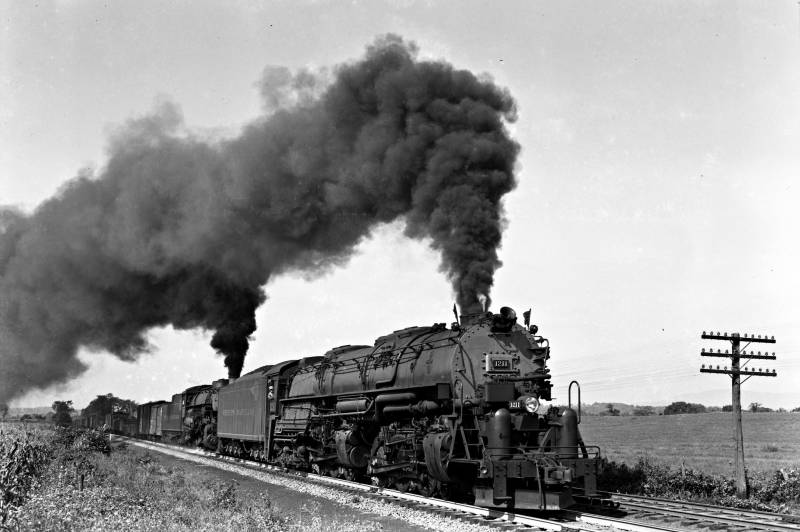
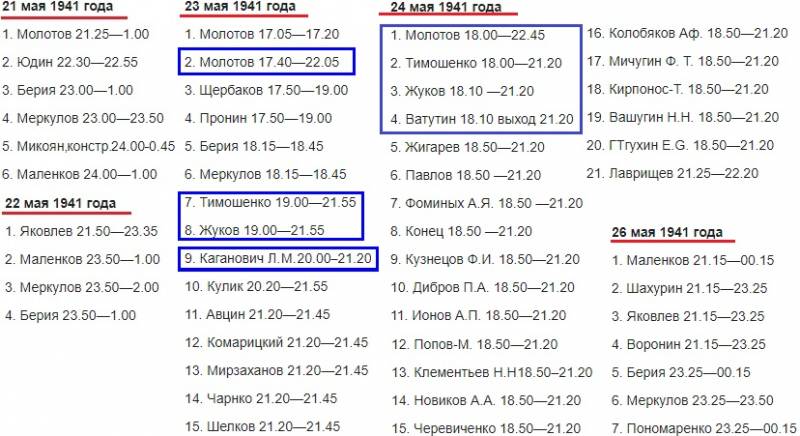
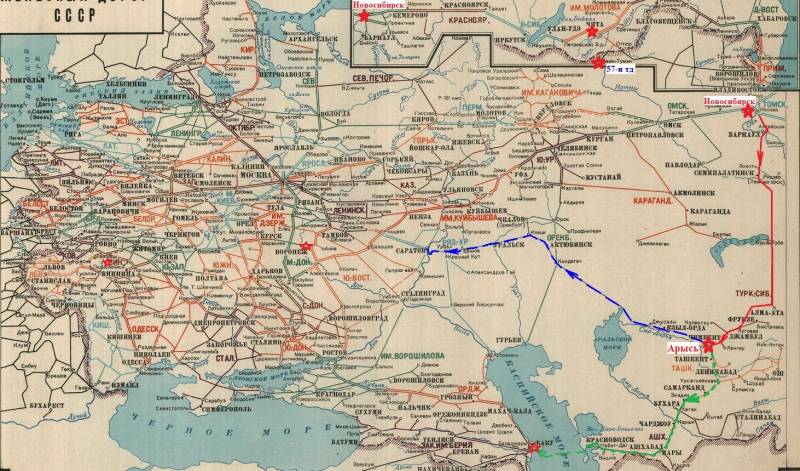
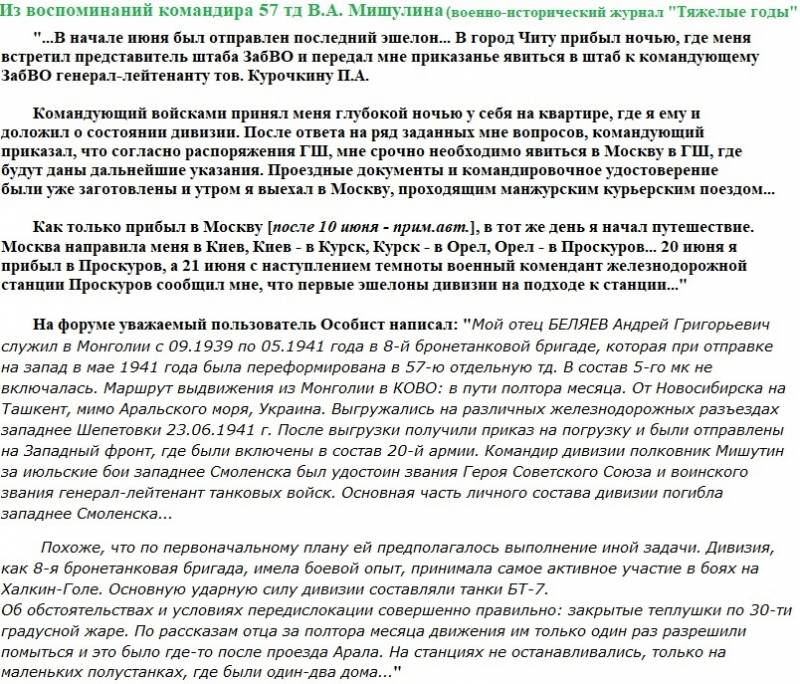
Information